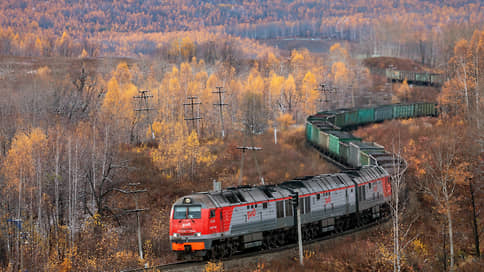The authorities want to expand the capacity of the BAM and Transsib to 270 million tons by 2035
[ad_1]

For the first time, the government has outlined guidelines for the expansion of the BAM and Trans-Siberian Railway beyond the horizon of the third stage of the project, which involves increasing capacity to 255 million tons per year by 2033. According to First Deputy Prime Minister Andrei Belousov, throughput capacity should increase to 270 million tons no later than 2035. According to analysts, any capacity in the Far Eastern direction is in demand, but it is necessary to estimate how much this expansion will cost, since there are alternatives, including the construction of coal preparation plants in Kuzbass, which will reduce the need for its transportation.
By 2035, the capacity of the BAM and Trans-Siberian Railways is planned to be expanded by almost 100 million tons to the current level. “The parameters for the development of the Eastern Polygon have now been determined – up to 210 million tons in 2030 and up to 270 million tons no later than 2035,” said Chairman of the Board of Directors of the monopoly, First Deputy Prime Minister Andrei Belousov on February 14 at the final meeting of the board of Russian Railways.
At the end of 2023, the carrying capacity of the BAM and Trans-Siberian Railways reached 173 million tons; this year, with the completion of the second stage of expansion of the Eastern range, it should increase to 180 million tons. Cargo transportation in the eastern direction, Mr. Belousov said at the board meeting, reached a historical maximum in 2023, amounting to 280 million tons, which is 8% higher than the level of 2021.
Until recently, even the figure of 255 million tons, confirmed at the level of the President of the Russian Federation at the end of 2023 (see “Kommersant” dated February 12), was questionable. These indicators are planned to be achieved within the framework of the third stage of the expansion of the BAM and Trans-Siberian Railway, the project passport must be agreed upon by the end of March.
Expansion of capacity from 180 to 255 million tons is estimated at 2.7 trillion rubles. It is not yet known how much it will cost to increase capacity by another 15 million tons, to 280 million tons.
According to Kommersant’s information, calculations of the cargo base for the 2033–2035 stage have not yet been made. At previous stages, they indicate a persistent deficit in the carrying capacity of the Eastern range: calculations seen by Kommersant show unsatisfied demand in the amount of 39.5 million tons for 2031 (reaching a throughput capacity of 210 million tons) and 77.2 million tons for 2033 (255 million tons). All additional requests are for export cargo, mainly coal (see “Kommersant” dated October 11, 2023).
According to the head of Infoline-Analytics, Mikhail Burmistrov, in the current geopolitical situation, any capacity of the Eastern test site will be in demand. At the same time, there are risks associated with the fact that China is introducing renewable energy at an accelerated pace, which could reduce its need for coal. In 2023, the volume of renewable energy in China was more than 200 GW. In addition, as a result of tariff reform in Russia, long-distance coal transportation may become significantly more expensive. However, the Far East will always be a cost-effective destination for coal companies, and there are not many alternatives, Mr. Burmistrov believes: in the ports of the South there is insufficient competition between specialized terminals, in the North-West there is too long a logistics route by sea around Europe or through the Northern Sea Route. Even if some Western sanctions are lifted by 2035, the Far East will remain a top priority given growing demand from China and India. However, says Mikhail Burmistrov, it is important to estimate how much it will cost to increase capacity by 15 million tons from 2033 to 2035: “We can reach the point where each subsequent ruble invested gives a smaller increase in carrying capacity.” According to the analyst, it may be cheaper to build coal preparation plants in Kuzbass and other regions in order to reduce the volume of its transportation through the network. The solution may turn out to be more effective, especially if the state supports the transportation of enriched coal with a tariff.
[ad_2]
Source link





